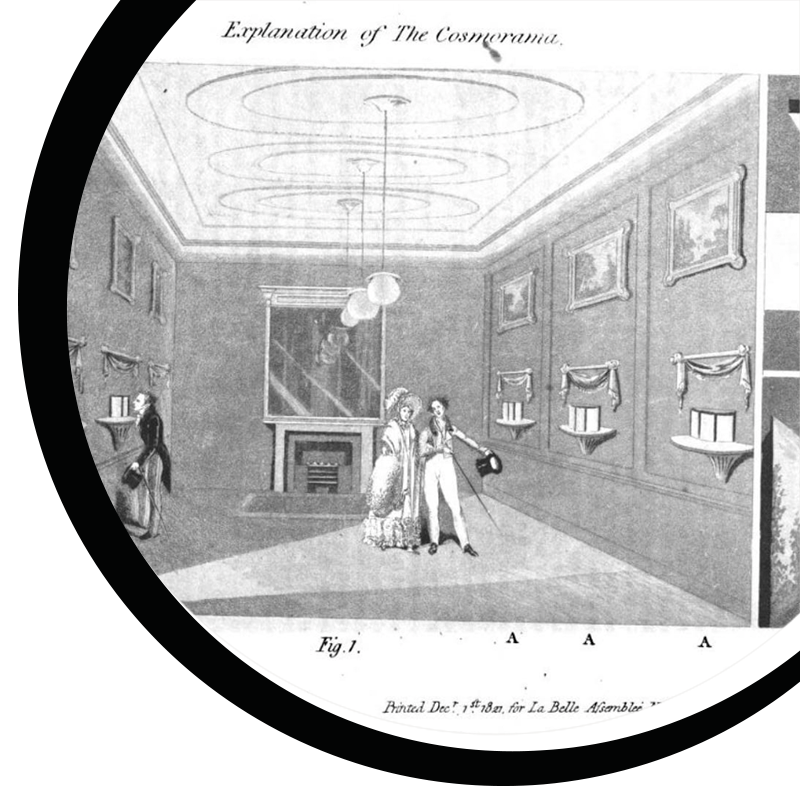Emerging in the early 19th century after the Panorama and before the Diorama, the Cosmoramas, or ‘views of the world’, were the most enduring of ‘orama’ shows and the only ones with a peeping system. Stemming from the peep shows circulating across European fairgrounds, Cosmoramas were installed in built fashionable exhibition rooms in city centres, displaying pictures behind a series of lenses set into a wall. The Cosmorama was the first commercial venue to provide this kind of peeping experience.
Early coined as a ‘curiosity show’, the Cosmorama was an elegant picture gallery first promoted in Paris in 1808 by the Italian churchman Jean-Antoine-Henri-Eugène Gazzera. Located at the wooden arcade next to the Palais Royal, the Cosmorama was advertised as a ’Picturesque Promenade around the World’, showcasing over 200 paintings with ‘the most remarkable monuments and locations of the modern and ancient world’. These large paintings (in 1823, after Daguerre’s Diorama, their size reached 203cm by 121cm) created a great illusion of depth and immersion due to special lighting and the magnifying lenses used to observe them.
Each Cosmorama exhibition could last from two to four weeks, ensuring a constant renovation of the views, a distinguishing feature among the competing shows. After 1832, the closing date of the Gazzera Cosmorama in Paris, other Cosmoramas proliferated in Europe promoting one of the first networks for the distribution and exhibition of images between countries such as Spain, Portugal and Great Britain. These shows have remained an invisible and neglected part of the evolution of optical media, receiving very little scholarly attention compared to panoramas or dioramas. The research project Curiositas is committed to restoring the visibility of Cosmoramas in History.
cosmoramas
In Portugal and Spain, Cosmoramas were presented under various designations, which did not always contribute to their study and understanding.
In Portugal, while the most common designation is Cosmorama, these images could also be presented in Optical Galleries or Optical Shows. Later shows, such as the Neorama and the Diorama, generated neologisms by agglutination such as Cosmoneorama.
In Spain, the most common names are Cosmorama, Neorama (not always as synonyms), Cosmoneorama, Templo de la Ilusión, Viaje pintoresco and Galería óptica.
Cosmoramas began to be regularly advertised in the press in the 1830s. To see some of these advertisements see the timeline of this website.

